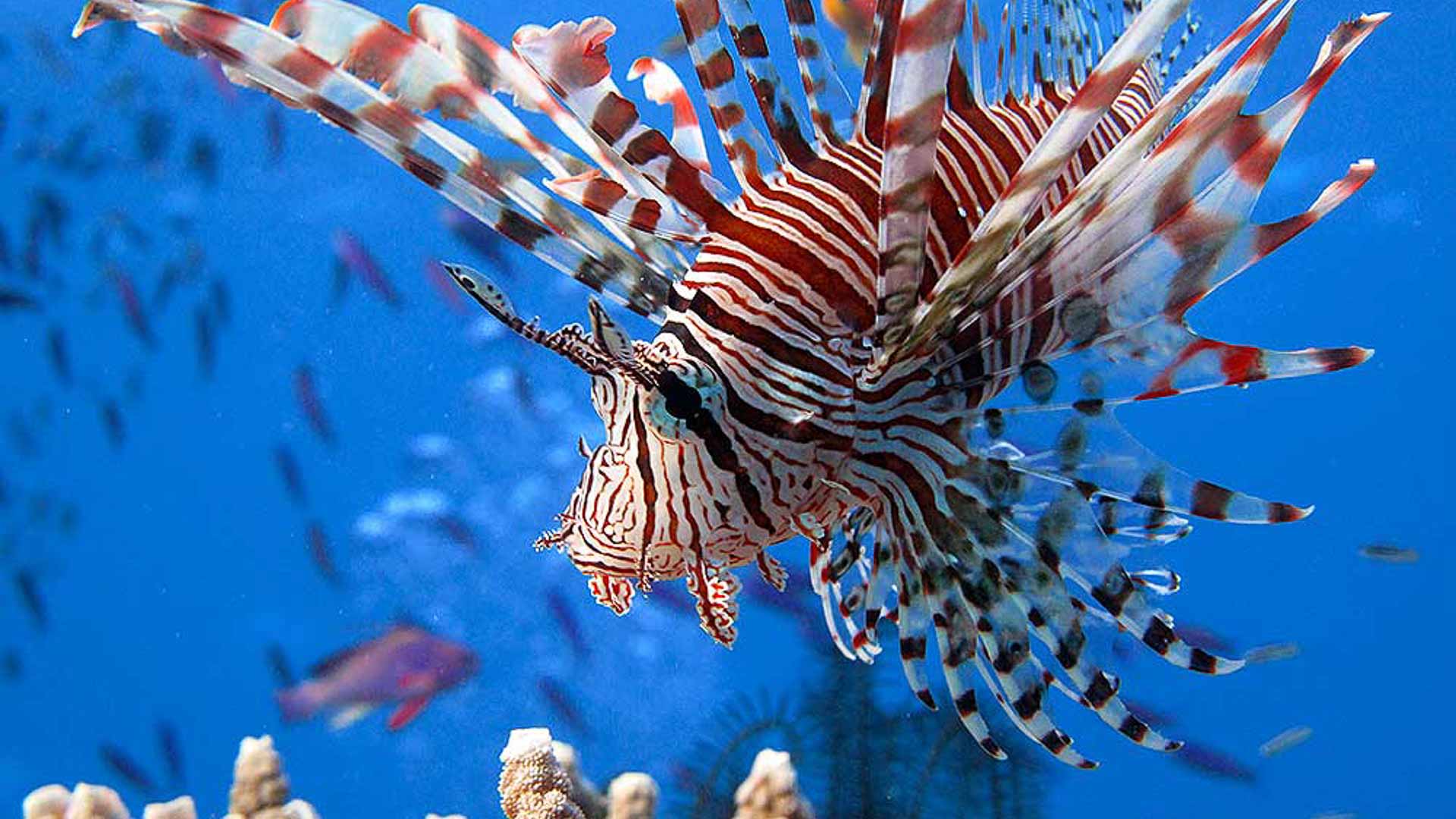Lionfish Threat Assessment
Understanding the Lionfish Invasion
Explore the critical statistics and facts about lionfish, their impact on marine ecosystems, and the efforts to control their spread.

Lionfish Statistics Overview
Delve into the numbers that reveal the lionfish’s reproductive prowess, voracious appetite, and ecological impact.
Reproduction Rates
Lionfish can lay up to 30,000 eggs every four days, leading to rapid population growth.
Year-round
Eating Habits
Consuming over 70 species of fish, lionfish can eat prey up to half their body size.
Daily
Ecological Impact
Lionfish reduce native fish populations by up to 90% in invaded areas, severely disrupting local ecosystems.
Ongoing
Habitat Invasion
Thriving in warm waters, lionfish have invaded the Atlantic Ocean, Caribbean Sea, and Gulf of Mexico.
Since 1985
Stay Informed
Subscribe to receive the latest updates on lionfish research and control efforts.
Natural Predators of Lionfish
Goliath Grouper
Reef Sharks
Moray Eels
Large Snapper
Barracuda
Cornetfish
Trumpetfish
Humpback Scorpionfish
Spotted Moray
Nassau Grouper
Tiger Grouper
Sandbar Shark
Nurse Shark
Bull Shark
Great Hammerhead Shark
Blacktip Shark
Lemon Shark
Green Moray Eel
Lionfish Habitats
Understanding the Lionfish's Environment
The lionfish, native to the Indo-Pacific region, thrives in warm, tropical waters. It is commonly found in coral reefs, lagoons, and rocky crevices where it can easily camouflage among the vibrant corals. These environments provide the perfect hunting grounds for the lionfish, allowing it to ambush prey with its venomous spines.
However, the lionfish has become an invasive species in the Atlantic Ocean, particularly along the southeastern coast of the United States, the Caribbean, and the Gulf of Mexico. In these new territories, lionfish have adapted to a variety of habitats, from shallow coastal waters to deep ocean reefs. Their presence in these non-native environments poses a significant threat to local marine life.
In invaded areas, lionfish disrupt the ecological balance by preying on native species, including juvenile fish and crustaceans. This predation pressure can lead to a decline in biodiversity and alter the structure of reef communities, ultimately affecting the health of the entire ecosystem.
The Impact of Lionfish Invasion
Lionfish invasions have catastrophic effects on the ecosystems they infiltrate. Their voracious appetite and lack of natural predators in non-native waters allow them to outcompete native species for food and habitat. For example, studies have shown that lionfish can reduce the population of juvenile reef fish by up to 90% in just a few weeks.
This dramatic decline in native fish populations disrupts the food chain and can lead to the collapse of local fisheries, impacting both biodiversity and the livelihoods of communities that depend on these resources. Furthermore, the loss of herbivorous fish, which help control algae growth, can result in algal overgrowth, smothering corals and further degrading reef health.
Join the Fight Against Lionfish
At Lionfish Slayers, we are committed to protecting our oceans from the destructive impact of lionfish. We invite you to join our efforts in combating this invasive species. By supporting local eradication initiatives, participating in lionfish derbies, and spreading awareness, you can make a significant difference in preserving marine biodiversity.

